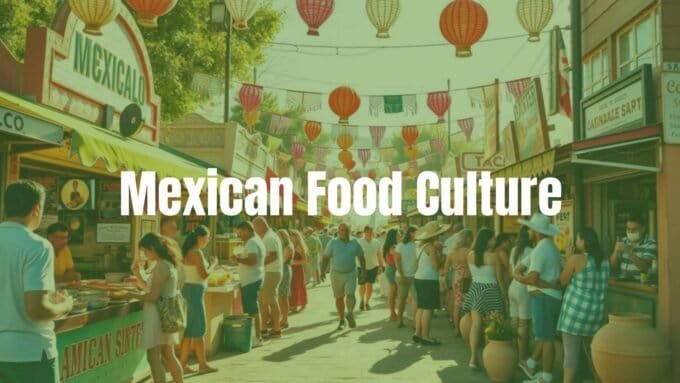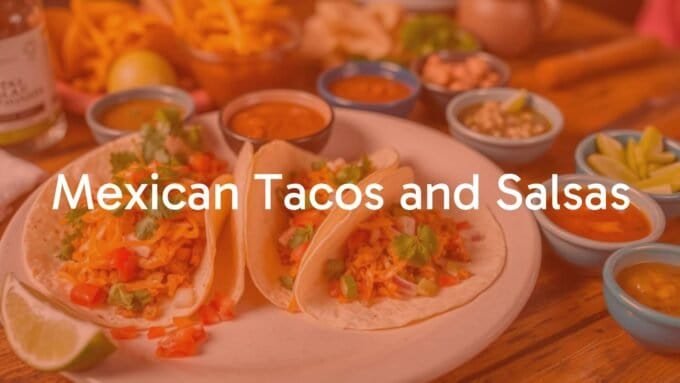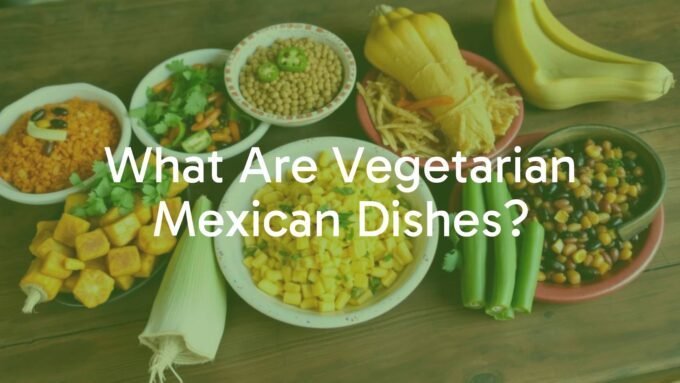When you hear “Mexican food,” do you think of hard-shell tacos and queso dip? If so, get ready to be surprised. Those dishes have their place, but they reflect a modern, U.S.-style take. Mexican cooking is wide and varied, built on thousands of years of history, many landscapes, and a blend of native traditions and outside influences. It’s so diverse that chef Enrique Olvera of Pujol in Mexico City suggests we stop talking about one “Mexican cuisine” and instead focus on places like Oaxaca, Veracruz, and Mérida. This guide will help you see the real range of regional Mexican dishes.
How Does Geography Influence Mexican Cuisine?
Mexico spans tropical forests, deserts, and long coastlines. This mix shapes what people cook and eat. Think of the ranches of the North, where beef dominates and grilling is common. Now think of the Southern Pacific coast, with mountains and valleys that keep native ingredients and cooking strong. Or the Yucatán Peninsula, with the Caribbean Sea and the Gulf of Mexico nearby, where seafood and tropical fruits shine and Mayan food is central. Each area builds its own style with what grows and lives around it.
What Are the Core Ingredients in Regional Dishes?
A few staples appear almost everywhere. Corn (maize) is number one, a base food since the Olmec and Maya. It’s in tortillas, tamales, pozole, and drinks like atole and pozol. Chiles are also everywhere, adding flavor as well as heat. Beans, squash, avocados, tomatoes, and cacao come from native crops. After the Spanish arrived, new foods changed daily meals: beef, pork, chicken, goat, sheep, dairy (especially cheese), rice, sugar, olive oil, and many fruits and vegetables. Mixing Old World and native foods built the flavors we now think of as Mexican.

How Have History and Culture Shaped Regional Flavors?
Mexican food tells stories of trade, change, and community. Early Mesoamerican cooking developed farming methods and the key process of nixtamalization for corn. The Spanish brought new ingredients, frying in pork fat, and other methods, blending into a mestizo style. Later, people from France, Lebanon, China, and Africa added their own touches. Veracruz shows strong Afro-Caribbean roots, while Yucatán has Lebanese dishes like kibbeh. These layers of history have turned simple foods into rich, symbolic dishes tied to festivals and family life. In 2010, traditional Mexican cuisine gained UNESCO recognition for this cultural value.
Regional Diversity: Key Culinary Regions of Mexico
Mexico is a patchwork of food traditions, each with its own identity. Talking about just one “Mexican cuisine” misses the details that make each place special. From northern beef country to the tropical south, you’ll find countless flavors, ingredients, and techniques.

Northern Mexico: Beef, Wheat, and Cheese
From Baja California to the Gulf, the North is known for ranching and dry lands. Beef is central, and grilling is the go-to method. States like Sonora, Chihuahua, and Nuevo León serve hearty, straightforward dishes. Cattle also led to strong cheesemaking-queso fresco, ranchero, and Chihuahua’s creamy queso menonita. Wheat is common, too, so flour tortillas are popular; Sonora is often credited with creating the burrito. Refried pinto beans, rice, and dried beef are everyday staples, fitting this region’s hearty style.
Baja California: Coastal Seafood and Fusion Dishes
Baja California, a long peninsula between the Pacific and the Gulf of California, focuses on seafood. It helped make fish tacos famous and hosts Mexico’s oldest ongoing wine region, known for quality wines. Its location near the U.S. and history of immigration created a lively fusion scene, with Russian influences in Valle de Guadalupe and Chinese in Mexicali. The region also claims the Caesar salad and the margarita. Northern classics get seafood twists here, like skate machaca and abalone chorizo.
Western Mexico: Jalisco, Michoacán, and Nayarit
Jalisco, Michoacán, and Nayarit each add something different. “Jalisco es México” sums up the state’s pride in mariachi, charrería, and tequila. With long coastlines, Lake Chapala, plains, and snowy peaks, Jalisco serves saucy meat dishes, rich cheeses, and custards tied to its cattle culture. Michoacán, shaped by Purepecha traditions, may use corn in more ways than anywhere else, with standout tamales and many atole flavors. Carnitas-deep-fried pork-often claims roots here. Nayarit brings seafood cooked with European spices and chiles, served with lively salsas.
Central Mexico: Mexico City and Puebla Influences
Central Mexico, including Mexico City and Puebla, blends many traditions. As a major city, Mexico City gathers food from all over the country and beyond. Street food is king, with endless tacos, tortas, and lunch counters. Puebla, set between Mexico City and Veracruz, became a crossroads that sparked new dishes. Local and Spanish ingredients meet in mole poblano and chiles en nogada, which many consider a national dish. The French presence in the 1860s also shaped baking, giving rise to many classic breads.
Oaxaca: Seven Moles and Indigenous Heritage
On the South Pacific coast, Oaxaca is often seen as a stronghold of indigenous cooking. Mixtec and Zapotec roots stay strong, and Spanish influence was lighter here. Corn is a constant, with ‘blandas’ (soft tortillas) at every meal. Oaxaca is called the “land of the seven moles”-complex sauces with many chiles, nuts, seeds, herbs, and sometimes chocolate. Black beans and chocolate are favorites, and herbs like hoja santa add a unique taste. The region keeps old seeds and cooking methods alive, drawing food lovers from everywhere.

Veracruz: Afro-Caribbean and Spanish Influences
On the Gulf Coast, Veracruz mixes Indigenous, Spanish, and Afro-Caribbean foodways. Europeans brought parsley, thyme, bay leaf, rice, citrus, and pineapple. Olives, olive oil, and capers came from Spanish Mediterranean settlers. From the Afro-Caribbean side came peanuts, plantains, yucca, and sweet potatoes. Vanilla grows here and flavors many dishes. With the sea close by, seafood is central. A classic is Huachinango a la Veracruzana-whole fish baked with tomato, olives, capers, garlic, and herbs.
Yucatán Peninsula: Mayan Traditions and Tropical Flavors
The Yucatán Peninsula has a style unlike most of the country. Mayan cooking leads the way, with Caribbean, French, and Middle Eastern touches. Achiote (annatto) gives a red color and gentle, earthy taste. Habanero peppers add fruity heat at the table. Tropical fruits-tamarind, mamey, avocados, bitter oranges-show up in salsas and more. Coastal towns love seafood. Inland, cochinita pibil-pork marinated with sour orange and achiote and slow-cooked in a pit-shows ancient methods. The mix of old techniques and tropical produce gives Yucatán its bright, tangy, and spicy character.
Chiapas and Tabasco: Spices, Corn, and Local Produce
Chiapas, Mexico’s southern tip, shares some traits with Oaxaca but has its own chiles and herbs. Corn is the base, with beef, pork, and chicken as common meats. Squash, chayote, and carrots appear often. The region is known for very hot chiles like Simojovel and for chipilín, a local herb. Tabasco’s deltas and estuaries bring a huge range of seafood, with lots of crab and crayfish. Indigenous, Afro-Cuban, and Spanish roots blend here, similar to Creole port cities. Both states put local produce and traditional ways at the center.
Ingredients and Cooking Techniques Unique to Regional Mexican Dishes
The strength of regional Mexican food comes from its ingredients and the old methods used to cook them. These practices, handed down over time, show a close link to the land and a careful approach to flavor.
Corn: Foundation of Tortillas and Tamales
Corn is more than food in Mexico-it’s part of daily life. It appears in many dishes and drinks. A key step is nixtamalization, where dried corn is soaked and cooked in an alkaline solution so the masa is easier to use and more nutritious. This gives tortillas and tamales their special taste and texture. Corn tortillas are eaten with almost every meal. Tamales are steamed in corn husks or banana leaves. Styles vary: ‘blandas’ in Oaxaca, thick ‘tlacoyos’ in Central Mexico, and fermented drinks like ‘pozol’ in Chiapas and Yucatán.
Achiote, Chiles, and Indigenous Spices
Chiles shape flavor across Mexico, with many types and heat levels. Think smoky pasilla oaxaqueña, fiery Simojovel from Chiapas, and fruity Yucatán habanero. Achiote (annatto) is a Yucatán staple, giving a red hue and warm scent to cochinita pibil and more. Hoja santa brings hints of anise and tarragon; epazote adds depth to beans. These herbs and spices show up in seasoning pastes (recados) and in moles, building layers of taste.
Dairy, Meats, and Seafood
The Spanish brought animals and dairy, changing daily meals. Beef, pork, chicken, goat, and sheep became common, especially in the North with its ranches. Dishes like machaca (dried beef), arrachera (skirt steak), and cabrito (roasted young goat) grew from this. Cheesemaking flourished, too: queso fresco, Oaxaca cheese (similar to mozzarella), and Cotija are now staples. Along the coasts, seafood takes the lead-Baja’s fish tacos and grilled lobster, Veracruz’s huachinango, and Tabasco’s many crab and crayfish dishes-often seasoned with both native and European flavors.
Traditional Methods: Grilling, Steaming, and Pit Cooking
Methods vary by region. In the North, grilling over open flames fits ranch culture. Steaming keeps tamales moist and tender. Pit cooking is one of the oldest methods-called ‘pibil’ in Mayan-used for dishes like cochinita pibil, where meat wrapped in banana leaves cooks slowly underground for a smoky taste and soft texture. Stone grinding once made masa and salsas; many now use blenders, but slow simmering still builds deep flavor in moles and stews.
Street Food vs. Home-Cooked vs. Festive Meals
Mexican food ranges from quick street bites to large, ceremonial spreads. Street food is central to daily life-tacos, tortas, sopes, tlacoyos, and elote-served with many salsas and toppings, often enjoyed before noon or late at night. At home, the main meal (comida) is at midday, usually a sauced main dish with beans and tortillas. Festive meals mark holidays and special days with big batches of mole, barbacoa, and tamales made for large groups. Good ‘sazón’ (a cook’s touch) is valued and shows care for family and guests.
Signature Regional Mexican Dishes and Their Origins
Every region has standout dishes tied to local history, ingredients, and identity. Tasting them is the best way to understand Mexican cooking.
| Region | Signature Dishes |
|---|---|
| Northern Mexico | Machaca, Cabrito, Arrachera |
| Baja California | Fish Tacos, Caesar Salad, Grilled Seafood |
| Jalisco | Birria, Torta Ahogada, Pozole Rojo |
| Oaxaca | Mole Negro, Tlayudas, Tamales Oaxaqueños |
| Veracruz | Huachinango a la Veracruzana, Arroz a la Tumbada |
| Yucatán | Cochinita Pibil, Papadzules, Panuchos |
| Mexico City & Puebla | Chiles en Nogada, Mole Poblano, Barbacoa |
| Chiapas | Chipilín Tamales, Pozol |
Northern Mexico: Machaca, Cabrito, and Arrachera
In the North’s plains and ranchlands, beef leads, inspiring hearty, bold dishes. Machaca starts with dried beef, rehydrated, shredded, and often cooked with eggs or wrapped in burritos-smart preservation for dry climates. Cabrito (roasted young goat), popular in Monterrey, Nuevo León, reflects ranch life and early Jewish influence in the area. Arrachera (marinated skirt steak) is tied to what became fajitas, now famous well beyond the region.
Baja California: Fish Tacos, Caesar Salad, and Grilled Seafood
Baja’s long coastline makes it a paradise for seafood and creative cooking. Fish tacos-often with crispy battered fish-offer a light take compared to meat tacos. Grilled seafood, from lobster to local fish like mero and esmedregal, is common. The region also claims two global favorites: the Caesar salad, created in Tijuana, and the margarita, said to have started in Ensenada in the 1940s. These dishes show Baja’s fresh ingredients and inventive approach.
Jalisco: Birria, Torta Ahogada, and Pozole Rojo
Jalisco’s most famous dish is probably Birria, a slow-cooked stew with a chile-rich broth, made with goat or lamb (or beef). It often marks special events. The Torta Ahogada (“drowned sandwich”) is a crusty roll stuffed with pork carnitas or other meats and soaked in a spicy tomato-chile sauce-often served in a bag to catch the spill. Pozole Rojo, a hominy soup with pork and red chile broth, rounds out the set. These dishes show Jalisco’s love for saucy, satisfying meals.
Oaxaca: Mole Negro, Tlayudas, and Tamales Oaxaqueños
Oaxaca is known for seven moles, with Mole Negro at the top. It’s a deep, dark sauce with many ingredients-several chiles, nuts, seeds, spices, and chocolate-simmered for hours. Tlayudas are giant, crisped corn tortillas spread with black bean paste (often with pork fat), then topped with cabbage, quesillo (Oaxaca string cheese), and meats. Tamales Oaxaqueños are large, wrapped in banana leaves, and often filled with one of Oaxaca’s moles. The region’s food shows careful technique and long-held traditions.
Veracruz: Huachinango a la Veracruzana and Arroz a la Tumbada
Veracruz blends native foods with Spanish and Afro-Caribbean flavors. Huachinango a la Veracruzana features whole red snapper baked with tomato, olives, capers, garlic, parsley, and bay leaf. Arroz a la Tumbada is a paella-style rice full of shellfish, tomatoes, peppers, and herbs. Peanut-based dishes like Pollo Encacahuatado show African influence. Seafood and vibrant sauces define this coast.
Yucatán: Cochinita Pibil, Papadzules, and Panuchos
The Yucatán’s star is Cochinita Pibil-pork marinated in sour orange and achiote, wrapped in banana leaves, and slow-cooked in a pit for smoky, tender meat. Papadzules dip tortillas in pumpkin seed sauce, fill them with hard-boiled eggs, and top with a bright tomato sauce. Panuchos are tortillas stuffed with black beans, fried, then topped with chicken or turkey, pickled red onion, avocado, and pickled jalapeños. Sour orange, achiote, and habanero give the region its punchy profile.
Mexico City and Puebla: Chiles en Nogada, Mole Poblano, and Barbacoa
Chiles en Nogada from Puebla is a celebratory dish-poblano chiles stuffed with picadillo (meat and dried fruits), covered with a walnut sauce, and topped with pomegranate and parsley in the colors of the flag. Puebla also gave us Mole Poblano, a sauce with many chiles, spices, nuts, and a touch of chocolate. In Mexico City, Barbacoa-slow-cooked lamb (or other meat) traditionally cooked over fire or in a pit-often fills tacos or comes with rich consommé. These dishes show the area’s love of layered, special-occasion cooking.
Chiapas: Chipilín Tamales and Pozol
In Chiapas, corn stays central. Chipilín Tamales mix the leafy herb chipilín into masa or filling, then steam the tamales in banana leaves for a grassy, fresh taste. Pozol, a fermented corn drink, often includes cacao for a cooling, nourishing sip tied to ancient customs. Very hot chiles like Simojovel often sit on the side to spice up meals. Chiapas’s cooking reflects strong indigenous roots and rich local fields and forests.

Traditional Mexican Beverages and Desserts by Region
No tour of Mexican food is complete without its drinks and sweets, many tied to specific places and ingredients.
Regional Drinks: Mezcal, Pozol, and Atole
From the maguey plant come key spirits. Mezcal, famous in Oaxaca, is a smoky, small-batch drink made from different agaves. Raicilla is the Jalisco name for a similar spirit. Tequila, also from Jalisco, is produced only in certain areas and known worldwide. Corn-based drinks matter too. Pozol, a fermented corn drink, is common in Chiapas and Yucatán, often with chocolate in Chiapas. Atole is a warm corn drink flavored with fruit, chocolate, or spices, often served with tamales. Aguas Frescas (fruit waters) and Horchata (sweet rice drink) are popular coolers. In Veracruz, Café de Olla-coffee with cinnamon and raw sugar-adds a local touch. These drinks fit daily life and celebrations.
Iconic Desserts: Capirotada, Chocolate, and Local Fruits
Many desserts reflect Spanish baking, but local ingredients remain central. Capirotada, similar to bread pudding, is common in the North, using bolillo bread, sugar, spices, dried fruit, and nuts. Chocolate, native to Mexico and prized by the Aztecs, often appears as a drink; Mexican hot chocolate with cinnamon and a hint of chile descends from older recipes. Churros and conchas are beloved, and many sweets celebrate local fruits like mamey, zapote, papaya, and tamarind-eaten fresh, made into aguas frescas, jellies, or ice creams. In Yucatán, marquesitas-crispy wafers filled with cheese, Nutella, or cajeta-are a favorite street dessert. Tocumbo, Michoacán, is famous for a huge range of fruit jellies and ice creams, turning local harvests into treats.
How to Experience and Cook Regional Mexican Dishes
Taking a food trip across Mexico’s regions can be an exciting sensory experience. You can travel to eat your way through markets and street stalls, or cook these flavors at home with the right ingredients and methods.
Advice on Finding Authentic Regional Food
To taste true regional cooking, seek real, everyday places. When traveling in Mexico, visit local markets and street vendors-often the center of tradition-where food is fresh and methods are time-tested. Long lines usually mean great food. In Oaxaca, visit a market for tlayudas and moles. By the sea in Baja California or Veracruz, pick seafood spots that serve the daily catch. Ask locals for tips and try dishes you don’t yet know. Following Chef Enrique Olvera’s idea, look for a specific style-Oaxaqueño, Veracruzano, or Yucateco-rather than a generic “Mexican” label. In big cities like Mexico City, you can even find places that cook pre-Hispanic foods, sometimes with insects, for a window into older traditions.
Home Cooking Tips and Key Ingredients to Source
Cooking regional Mexican food at home starts with good ingredients and basic techniques. Stock up on Mexican chiles-fresh (jalapeños, serranos, poblanos, habaneros) and dried (guajillo, ancho, pasilla, chipotle). They build depth and aroma. Get quality corn masa for tortillas or tamales, or buy good tortillas if you can’t make your own. Read up on nixtamalization if you want to make masa from scratch. Keep beans (black, pinto), Mexican oregano, cumin, cinnamon, cloves, onions, garlic, and cilantro on hand. For regional dishes, find achiote paste (Yucatán), hoja santa (Oaxaca), and piloncillo (for moles and sweets). Local Latin markets or trusted online shops can help you find what you need.
Popular Dishes to Start With at Home
If you’re new to regional Mexican cooking, start with a few classics:
- Mole Poblano (Puebla): Many recipes break it into easy steps that still deliver deep flavor.
- Cochinita Pibil (Yucatán): Use a Dutch oven or slow cooker to get tender, achiote-and-sour-orange marinated pork.
- Birria (Jalisco): A slow-cooked chile stew that makes great taco filling and rich consommé.
- Fresh Corn Tortillas: A base skill that opens the door to many tacos and antojitos.
Make a few salsas-bright salsa verde or smoky salsa macha-to finish your dishes. As you cook these, you’ll start to see how wide and rich regional Mexican food really is.














Leave a comment